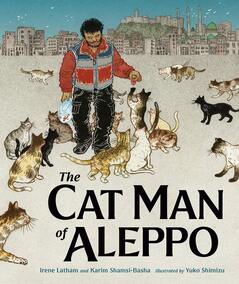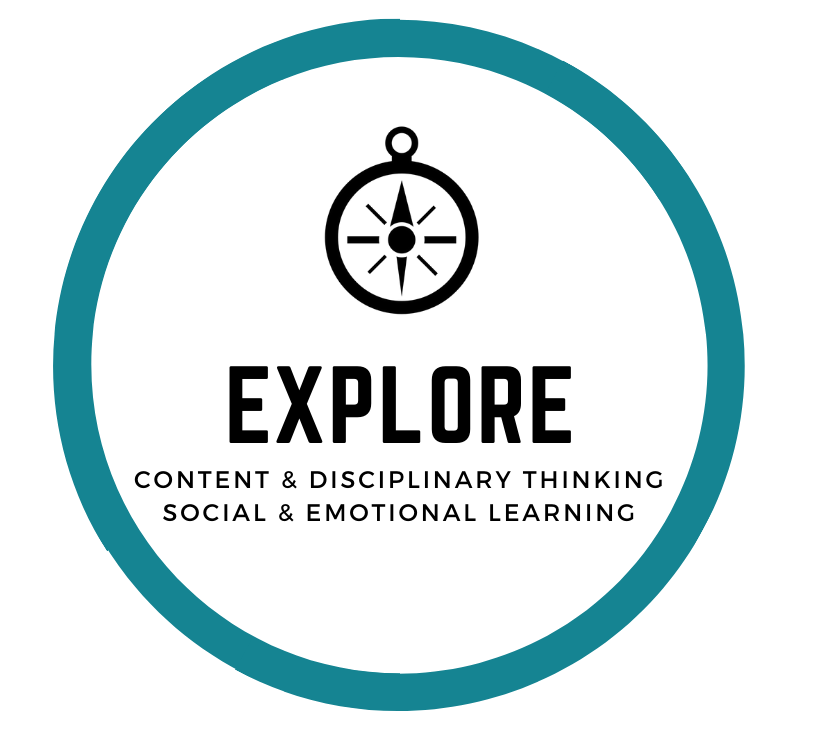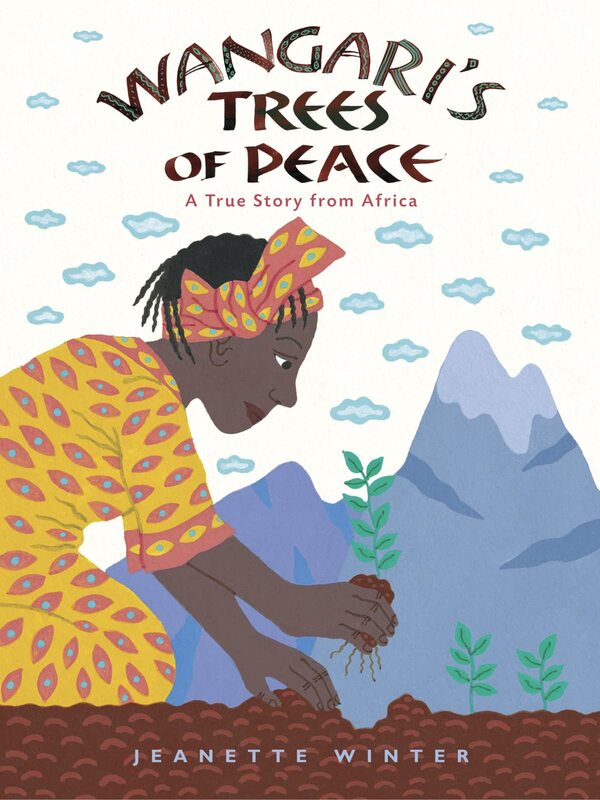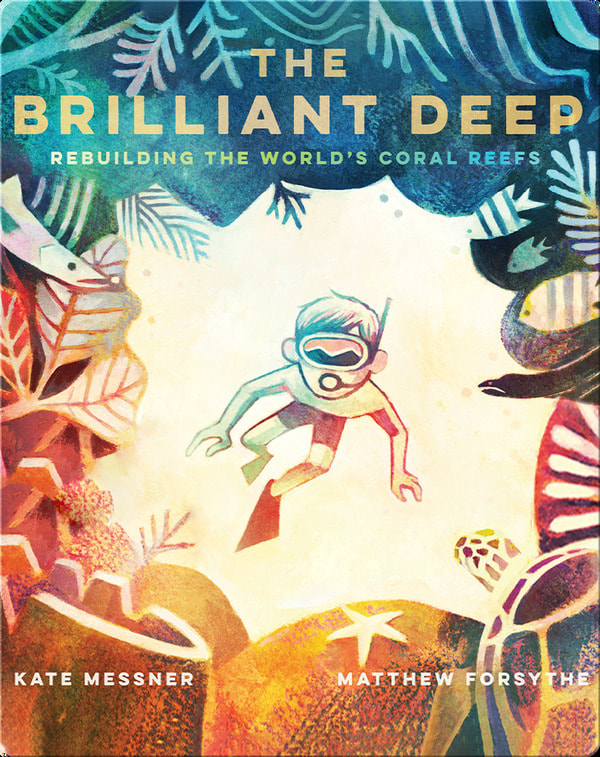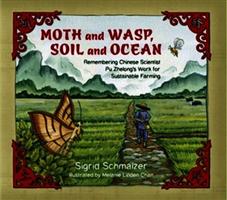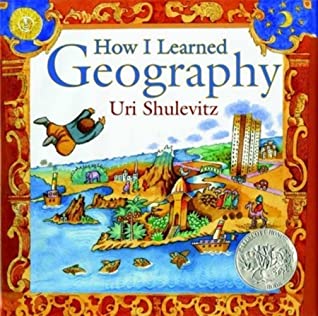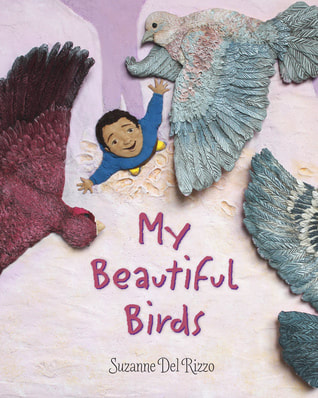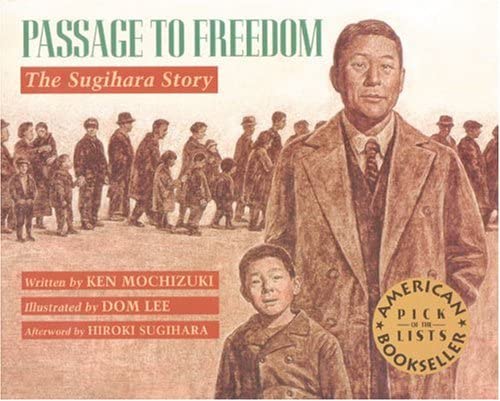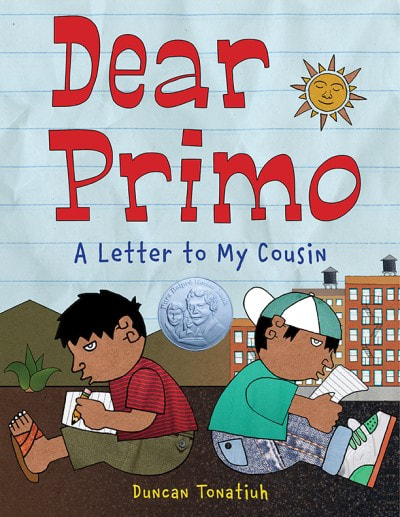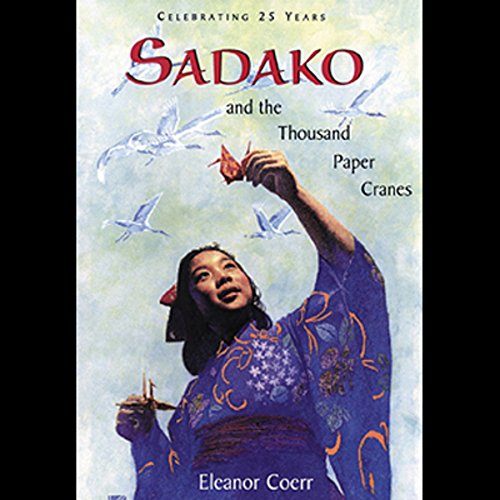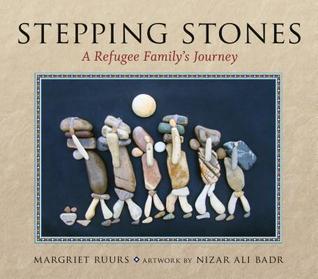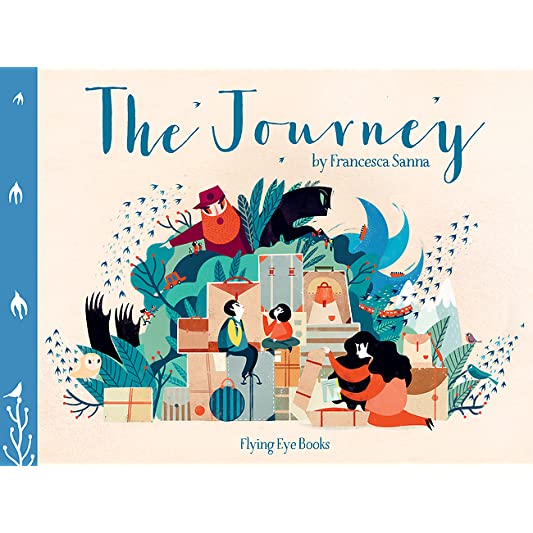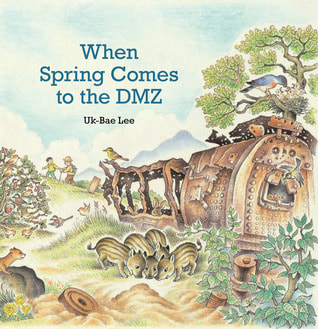|
Entry written by Dr. Amina Chaudari and Dr. Courtney Shimek on behalf of the Biography Clearinghouse.
|
Research & Writing ProcessWho are Irene Latham, Karim Shamsi-Basha, and Yuko Shimizu?
|
|
Karim Shamsi-Basha is a writer and photographer who immigrated to the United States in 1984 from Damascus, Syria at the age of 18. His children’s book, The Cat Man of Aleppo, has received five starred reviews. Karim has published four other books: The Beauty Box, a collection of photographs and essays about Southern beauty parlors and their vanishing culture. Shelter from the Storm, commissioned by the Salvation Army and offering stories of the homeless. Home Sweet Home Alabama contains photographs and essays about the state Karim loves. Next for Karim is Cactus Pear, a novel about a 15-year-old Muslim boy in love with a Christian girl amid the Syrian civil war. Karim’s wish for people to love one another is where his personal and professional goals intersect. He is father to three brilliant and beautiful children: Zade, Dury, and Demi; and he lives by the motto Carpe diem. Read more about Karim on his website.
|

Yuko Shimizu (清水裕子) is A multi-award-winning Japanese illustrator based in New York City. Yuko is an instructor at The School of Visual Arts and has almost 20 years of experience illustrating. Yuko is a two-time Hugo Award nominee (2019, 2020), has won more than 15 medals from the Society of Illustrators since 2004, and was recently awarded the Caldecott Honor (2021), one of the highest awards for picture books, for her work on the children’s book The Cat Man of Aleppo (Penguin, 2020).
- FUN FACT 1: Illustration is actually Yuko’s second career. Although art has always been her passion, she had initially chosen a more practical path of studying advertising and marketing at Waseda University and had a career in corporate PR for 11 years before moving to New York to study art for the first time. Yuko graduated with MFA from SVA’s Illustration as Visual Essay Program in 2003 and has been illustrating and teaching since.
- FUN FACT 2: Yuko shares the very same name with another artist, the creator of Hello Kitty. They are not related.
Irene's, Karim's, and Yuko's Processes & Artifacts
|
|
Listen to the interview with Irene, Karim, and Yuko to learn more about their processes.
|
Craft & Structure
Writing in the Present
|
While many biographies highlight the contributions of people in the past, The Cat Man of Aleppo is unique in demonstrating the ongoing work of Mohammad Alaa Aljaleel, who goes by Alaa. Irene Latham and Karim Shamsi-Basha used the present tense when writing his story. When asked during their interview why they made this choice, Irene replied, “We really never considered doing it any other way.” [TIME STAMP 44:00 - 45:55]
|
After doing an initial read with students, go back through The Cat Man of Aleppo and notice the verb choices Irene and Karim employ throughout. Discuss how these choices alter the perspective of the reader. How might the book feel different if it had been written in the past tense? What does the decision use present tense make readers feel as they listen/read? Some language to introduce this idea to students could be:
|
- “I noticed how Irene Latham and Karim Shamsi-Basha describe what Alaa is actively experiencing throughout the book. For example, they begin with ‘Alaa loves his city of Aleppo’ (n.p.). This helps me see Aleppo from Alaa’s perspective and makes me feel more invested in the text. I am also guessing that Alaa is still alive and currently doing this work in Syria, which makes me want to research him further. How does it make you feel?”
- “Let’s try another page together and see how it makes us feel as readers. As I read, notice how it makes you feel and what it makes you think about. ‘The cats’ lonely, confused faces remind Alaa of the loved ones he has lost. So many goodbyes! So many people he hasn’t been able to help’ (n.p.). (Let students share what they are thinking and feeling). “I wonder how we might feel if instead, the book read, ‘So many people he wasn’t able to help,’ instead. That makes me feel kind of hopeless. How does it make you feel? See how the difference between past tense and present makes us react differently? By using the present tense, Irene and Karim help us to remain hopeful. Even though Alaa hadn’t been able to help so many people, maybe he will by the end of the book.”
Drawing As Writing
|
Scholars such as Debbie Rowe, Karen Wohlwend, and Anne Hass Dyson have demonstrated the connections between drawing and writing for young children for decades. When children draw, they establish a setting, characters, and the plot of their story. They add details, convey emotions, and express their thinking about the world. In her illustrator’s note, Yuko Shimizu expressed how she wanted to bring Aleppo to life for the readers through her illustrations. She provided numerous resources for research about the setting, the characters, and the emotions she hoped to convey to readers and discussed how her conversations with Karim about Aleppo helped her envision how to bring the city to life.
|
After reading aloud The Cat Man of Aleppo, engage students in a sketch to stretch. Provide students with art supplies and ask them to sketch a scene from the book that encompasses the essence of the biography. Encourage students to think about the message Irene, Karim, and Yuko want readers to take away from the book and convey this through their own illustrations. When students have completed their drawings, display them up around the room and do a picture walk so students can see each other's creations.
Discuss as a group the similarities and differences amongst the illustrations. What elements of the biography did students gravitate toward? What perspectives did some students include that others did not? Talk with students about how everyone’s focus while reading is different for all of us, and how art allows us to express such a wide variety of emotions and interpretations of the human experience. Connect this drawing exercise to the work students do as writers. When you feel it is time to remove students’ drawings from around the room, bind them together into a class book to put in your classroom library for safekeeping.
|
Content & Interdisciplinary ThinkingCaring about the WorldThe Cat Man of Aleppo invites readers to think about the capacity of people like Alaa to take action and help the living things around them. We might describe Alaa as a humanitarian because he was moved to take care of the abandoned cats as well as provide shelter and care for children, even when his own life was at risk. The list of books below highlights humanitarian efforts by real and fictional people who took great strides to care for nature and the environment. They can be used as curriculum text sets, as mentor texts for writing, and as read alouds with rich discussion.
|
Teaching and Learning About Syria
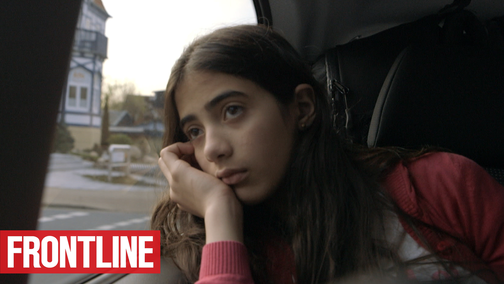
Teachers may need to provide some context for students reading The Cat Man of Aleppo. The following resources include information that is specifically intended for teaching about the Syrian war.
- TeachMideast: This website, curated by the Middle East Policy Council in Washington D.C., provides in-depth information on conflicts in the Middle East, not limited to the Syrian war. Resources are organized into sections such as Background Information, Lesson Plans and Teaching Materials, Films and Documentaries, Podcasts, Books, and more.
- PBS LearningMedia. Watch the Frontline documentary, Children of Syria: A Syrian Family Becomes a Refugee Family. The film is geared to grades 9-12 - an older audience than would read The Cat Man, but a useful source of information for teachers. The website includes teaching materials that can be adapted for younger readers.
- Recreating Syria. Yuko Shimizu’s illustrations of The Cat Man of Aleppo are rich in detail and provide a beautiful, stylized but realistic visual recreation of Alaa’s home city that is so crucial in the story. In the interview, Yuko shares how she created illustrations about a place she had not visited and made choices about how she represented Aleppo [TIME STAMP: 11:48 - 15:00]. She reflects on the “artistic liberties” she took and what she hopes readers will understand as a result. Students can listen to this portion of the interview, examine Yuko’s artifacts, and juxtapose them with the illustrations in the book to deepen their understanding of Aleppo.
Social Media in the Classroom
|
Irene shared in her interview (and in the Author’s Note) that she read about Alaa on Twitter and immediately knew it was a story she wanted to share. She reached out to Karim for help writing the book, and Karim and Alaa maintain a strong friendship over the phone and through various social media apps. With the ever-growing role that visual media plays in our lives, using it as a tool in the classroom can help students navigate the complexity of social media, learn to think critically about the information they consume, and can inspire ideas for further research and writing.
To better understand why we should be using social media in the classroom, check out the following resources:
|
Use social media platforms such as Facebook, Instagram, and Twitter at the beginning of each day for students to learn about current events. Have students notice how different media outlets present the news and use this as an opportunity for developing critical literacy skills. Students may even be inspired to use a news story in their own writing as Irene did.
Engage students in book talks using social media. Have students “live Tweet” their reactions, questions, and responses to the books and read the comments from others that have read the same book.
Tweet questions to your favorite authors- some of them might even respond! You can also use video conferencing platforms such as Google Hangouts, Zoom, Skype, or Microsoft Teams to host these book creators in your classroom.
|
Students can create photo stories and or short videos about something they are learning about and post them on Instagram. For example, using the Humans of New York Instagram page as a mentor text, have students interview important people in their community and share quotes from this person.
Encourage visual learning by having students create a Pinterest page. Pinterest can be used as an ongoing bibliography or can contain links and resources for a specific research topic.
Use TikTok as a platform for students to show off their skills. Have them create videos to teach other users about topics of interest, skills they employ as readers, or as reaction videos to their favorite books.
- Humans of Bronx Science is just one example of countless schools using this form to share what makes their school a special place.
Encourage visual learning by having students create a Pinterest page. Pinterest can be used as an ongoing bibliography or can contain links and resources for a specific research topic.
- This blog discusses countless ways Pinterest can be used in the classroom.
Use TikTok as a platform for students to show off their skills. Have them create videos to teach other users about topics of interest, skills they employ as readers, or as reaction videos to their favorite books.
- Search TikTok using the hashtag #finalproject for countless student examples in all kinds of content areas.
Social & Emotional Learning
Discussing War with StudentsAt the time of writing this entry, we find ourselves grieved by the recent invasion of Ukraine by Russian forces. As the world watches, millions of people’s lives are being devastated and forced migration is on the rise. We cannot help but connect what we are seeing and reading to the conditions that Alaa and other Syrians have endured since 2011. Talking about war with children is difficult on many levels and adults may shy away from hard questions. Children’s literature can help focus and facilitate discussion and invite/allow readers to process the myriad, complex ways that war and its consequences impact people. The books below include real and fictional stories of lives affected by war, many with hopeful, optimistic messages that counter the darkness of violence without shying away from the realities of war. Reading these books with students normalizes the experiences of children from war-torn places, answers questions students may have, and encourages empathy from students privileged enough to not live through a war. Reading these books with students elucidates the impact of war on civilians and their lives beyond the immediate effects of military conflict.
|
The Universe of Obligation

Early in The Cat Man of Aleppo readers learn that “Alaa has a big heart” - a fact that becomes more and more evident. By drawing attention to this figurative phrasing, students can be engaged in discussions about what it means to “have a big heart,” citing evidence from the text and making connections to examples from their own lives. [TIME STAMP 18:00 - 23:00] Alaa’s work as an ambulance driver primed him to be ready to act when called upon. When he observed the abandoned cats, he knew immediately that he had to do something to protect them. The cats were in his universe of obligation* - the concept that we are all connected to, and responsible for each other. Alaa’s efforts were supported by people from all around the world, as well as in Aleppo who donated funds, time, and materials that made it possible for Alaa to run the sanctuary. The Cat Man of Aleppo offers an opportunity to discuss and practice this concept.
*The national education organization, Facing History and Ourselves, includes teaching ideas and materials that draw on the concept of Universe of Obligation (lesson handout).
The international news media shared these video clips of Alaa at the sanctuary:
*The national education organization, Facing History and Ourselves, includes teaching ideas and materials that draw on the concept of Universe of Obligation (lesson handout).
The international news media shared these video clips of Alaa at the sanctuary:
- BBC News: https://www.youtube.com/watch?v=hgFiwMoytM8
- DW German News Broadcast: https://www.youtube.com/watch?v=Mf1ds46ibn4
- NBC News: https://www.youtube.com/watch?v=r2FKNdTBNkY
New Texts & ArtifactsResearching VisualsIn her illustrator’s note, Yuko Shimizu provides readers with a list of references she used to conduct research about the visual images of Syria she created for readers. She spoke of this challenge in her interview with us, and of how this challenge was exacerbated by her being a cultural outsider who had never visited Syria. So much of our research focus with students revolves around writing, but conducting visual research to depict a place as accurately as Yuko did is a challenging skill that requires keen observation skills and strong attention to detail.
|
Begin engaging in this work with students by discussing different elements of visual literacy. As a class, read the first half of Molly Bang’s Picture This: How Pictures Work. Given the visual nature of this book, sharing it using a document camera or leaving it available for students to explore after you read it with them is paramount. Discuss how color, shape, line, scale, texture, motion, etc. change your perception as a reader of visual images. Focus on sections such as the ones on pages 17-19 that depict Little Red Ridinghood as a small red triangle, and how the placement of that triangle on the page shapes how we perceive her vulnerability in the woods. Then select spreads in The Cat Man of Aleppo that similarly make use of composition to evoke our emotions. Some examples include the two-page spread of Alaa and the children surrounded by cats, the spread that follows immediately in which Alaa is surrounded by social media symbols, and the front and back matter spread that depicts a blue sky and white doves.
If you have 1-2 hours... |
If you have 1-2 days... |
If you have 1-2 weeks... |
|
Compare the illustrations of The Cat Man of Aleppo to some of the other biographies we have featured on the Clearinghouse website. Notice together how the visual images in the biographies make you feel.
Discuss together or in small groups: What colors, style, shape, and lines do the artists use to elicit these feelings? Focus on details included in the illustrations that give you a sense of place. How do the people look similar to or different from people in your community? What kinds of natural elements are included? What do these illustrations lead you to understand about the setting of the biography? Record these noticings on chart paper for the class to refer back to. Encourage students to continue to explore the visuals of the books they are reading independently. |
Based on the units of study going on in your classroom, select a few places around the world for students to research. Provide books, magazine articles, social media accounts, images from the internet, and even video clips for students of this place. Have students work in small groups to document what they notice about the people, the natural elements, the buildings, what roads and cars look like, etc.
Based on their noticings, have students create either a digital or a paper vision board of the place they have researched. These can be shared on social media afterward or displayed on the wall for others to see. Have students notice the differences between the places they researched. |
Using the skills developed thus far and the vision boards created previously, have students work individually or as a group to create a research-informed illustration of their assigned place. Encourage students to talk about their drawings to the class or even record a TikTok video about the research they conducted, how this is evident in their illustration, and why they made the decisions they did as an artist.
|
Connecting Ourselves with the World
Once students have researched their own visuals and spent time understanding what a place looks like, invite students to create their Universe of Obligation and engage in thinking about how we are all connected to the people, animals, and places around the world.
If you have 1-2 hours... |
If you have 1-2 days... |
If you have 1-2 weeks... |
|
Compare the illustrations of The Cat Man of Aleppo to some of the other biographies we have featured on the Clearinghouse website. Notice together how the visual images in the biographies make you feel.
Have students use the Universe of Obligation chart to think about Alaa’s motivation. Who and what did he consider part of his universe of obligation? Complete the chart for Alaa, and then one for themselves. |
Deepen and develop students’ understanding of the universe of obligation by filling in the chart for people in some of the other books listed in the Explore section above. Then compare and discuss using these prompts:
|
Building on the creative work described above, students can come up with ideas for further research, posing questions about the places and people they learned about, and what they would like to investigate further. This kind of student-centered curiosity is at the heart of inquiry-based teaching and learning. People like Alaa - ordinary citizens who act from a place of deep compassion - are in all communities. Students can investigate their own communities to find unlikely role models like Alaa.
|
Chaudari, Amina & Shimek, C. (2022). The Cat Man of Aleppo. The Biography Clearinghouse.

